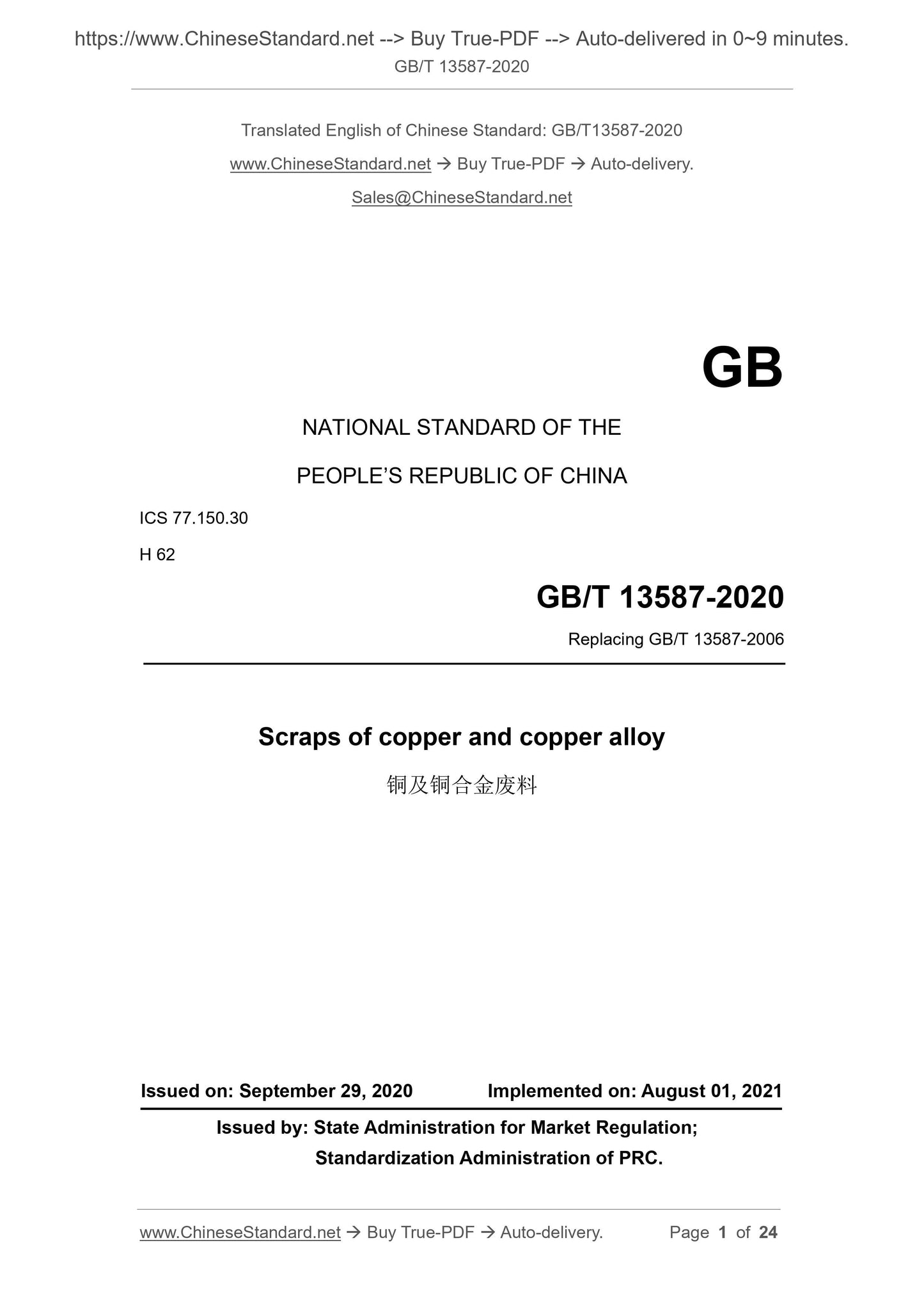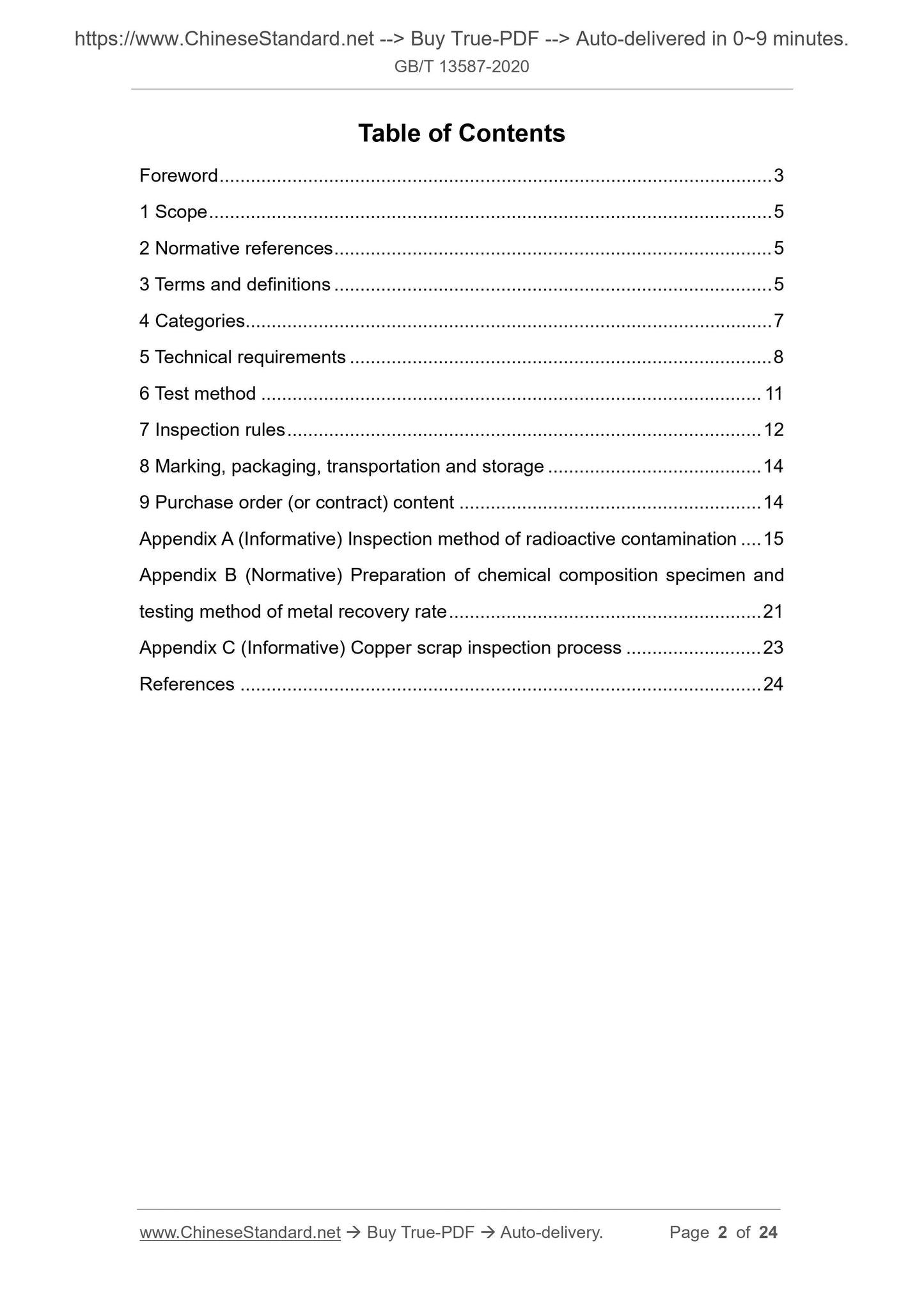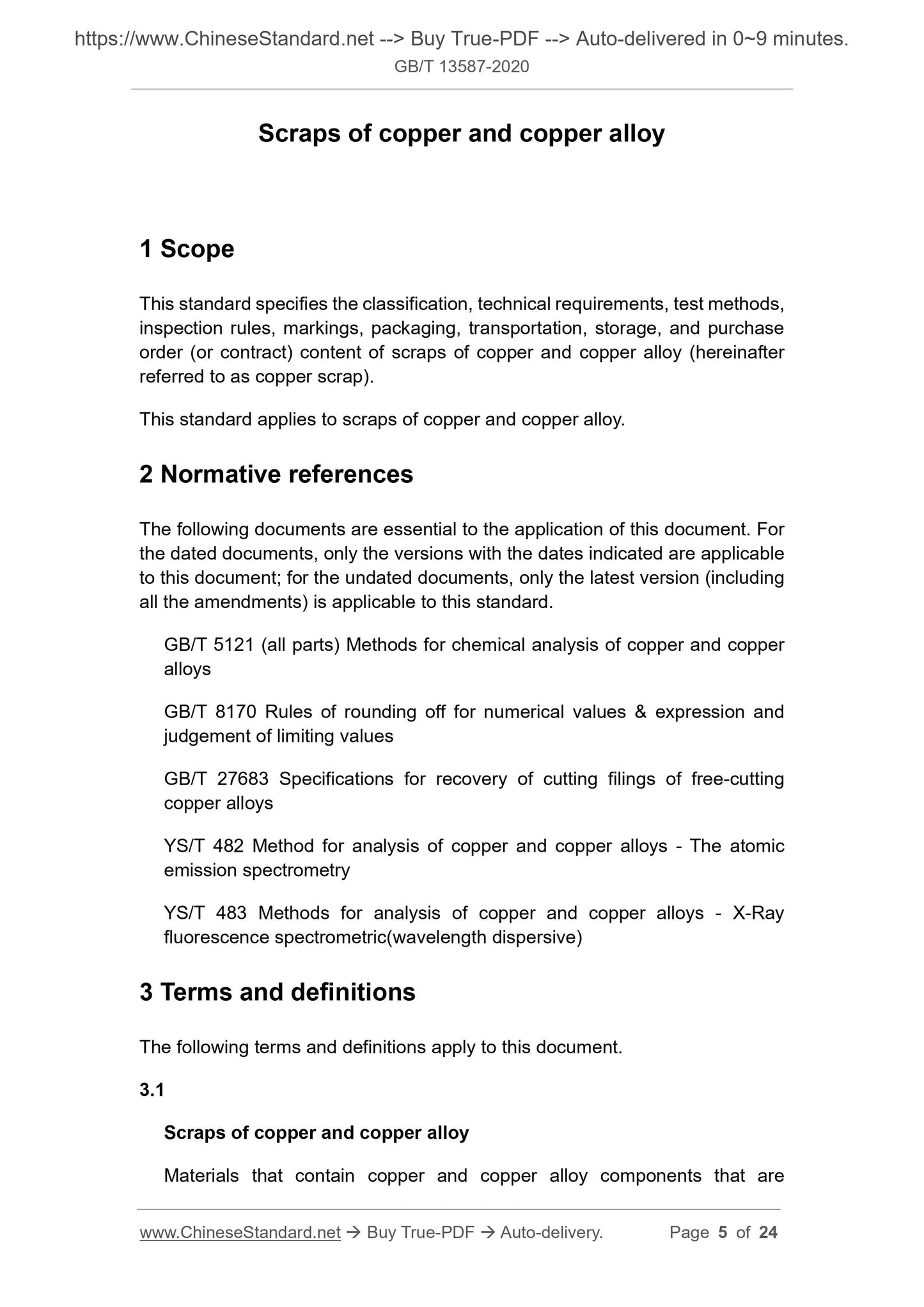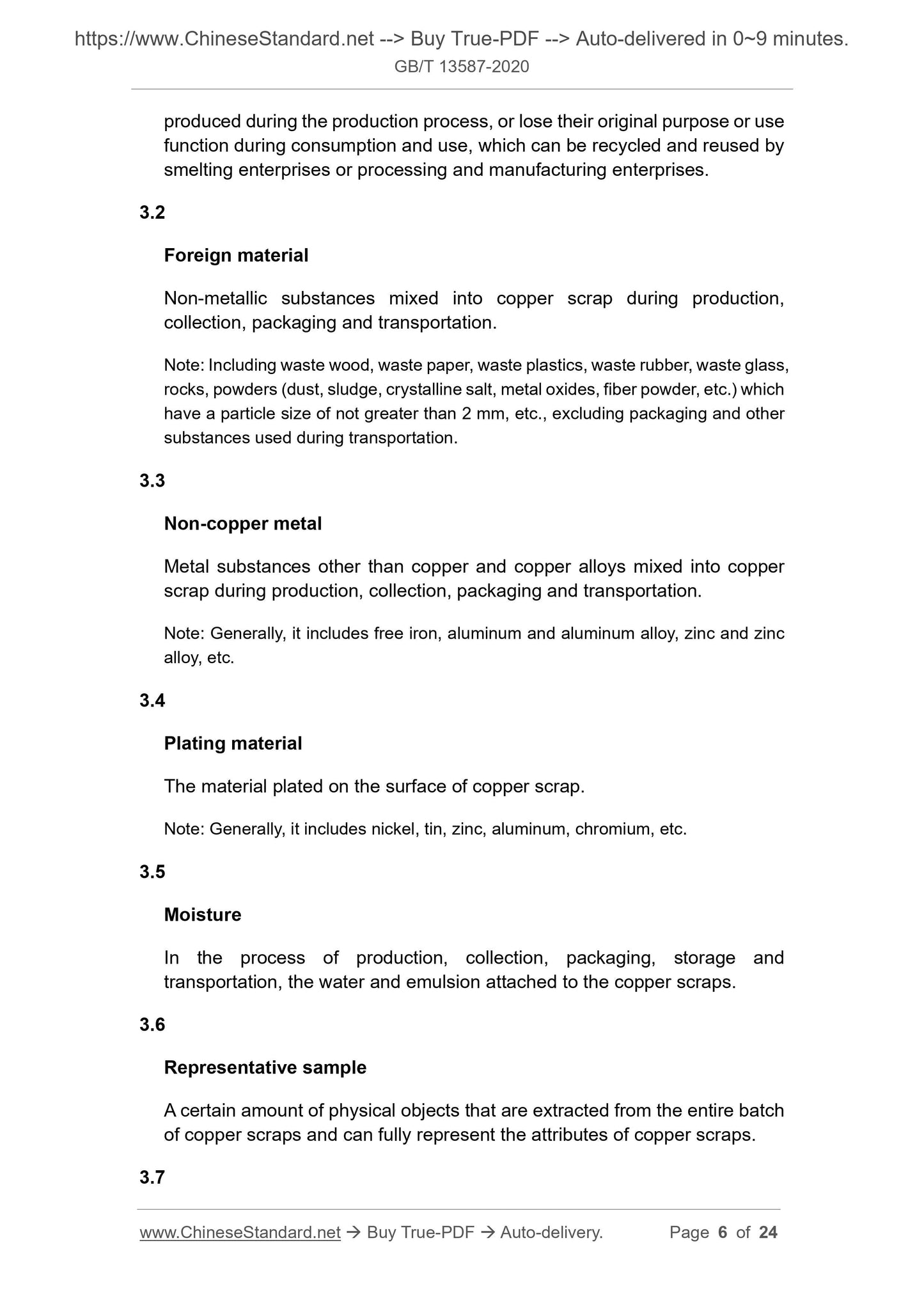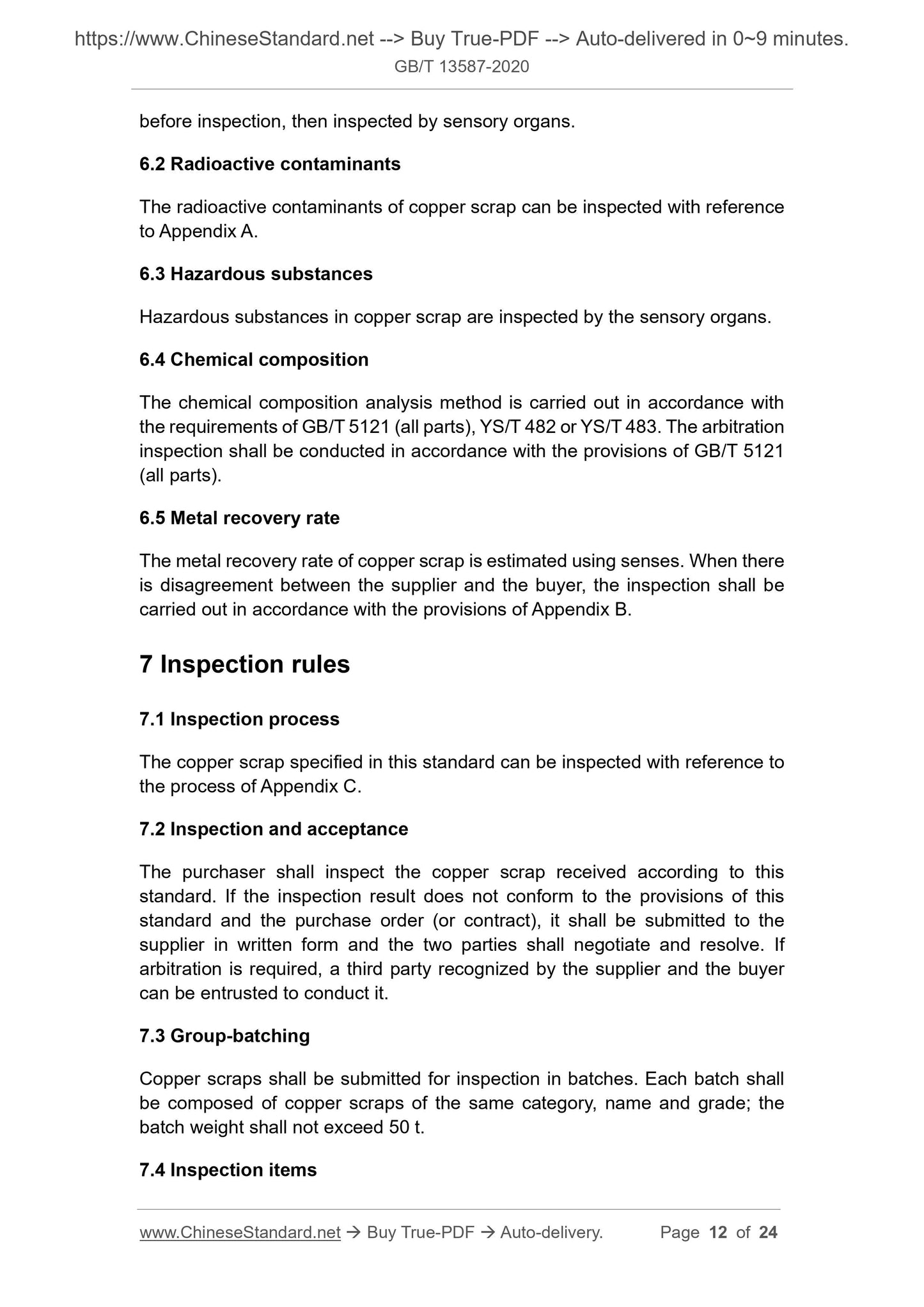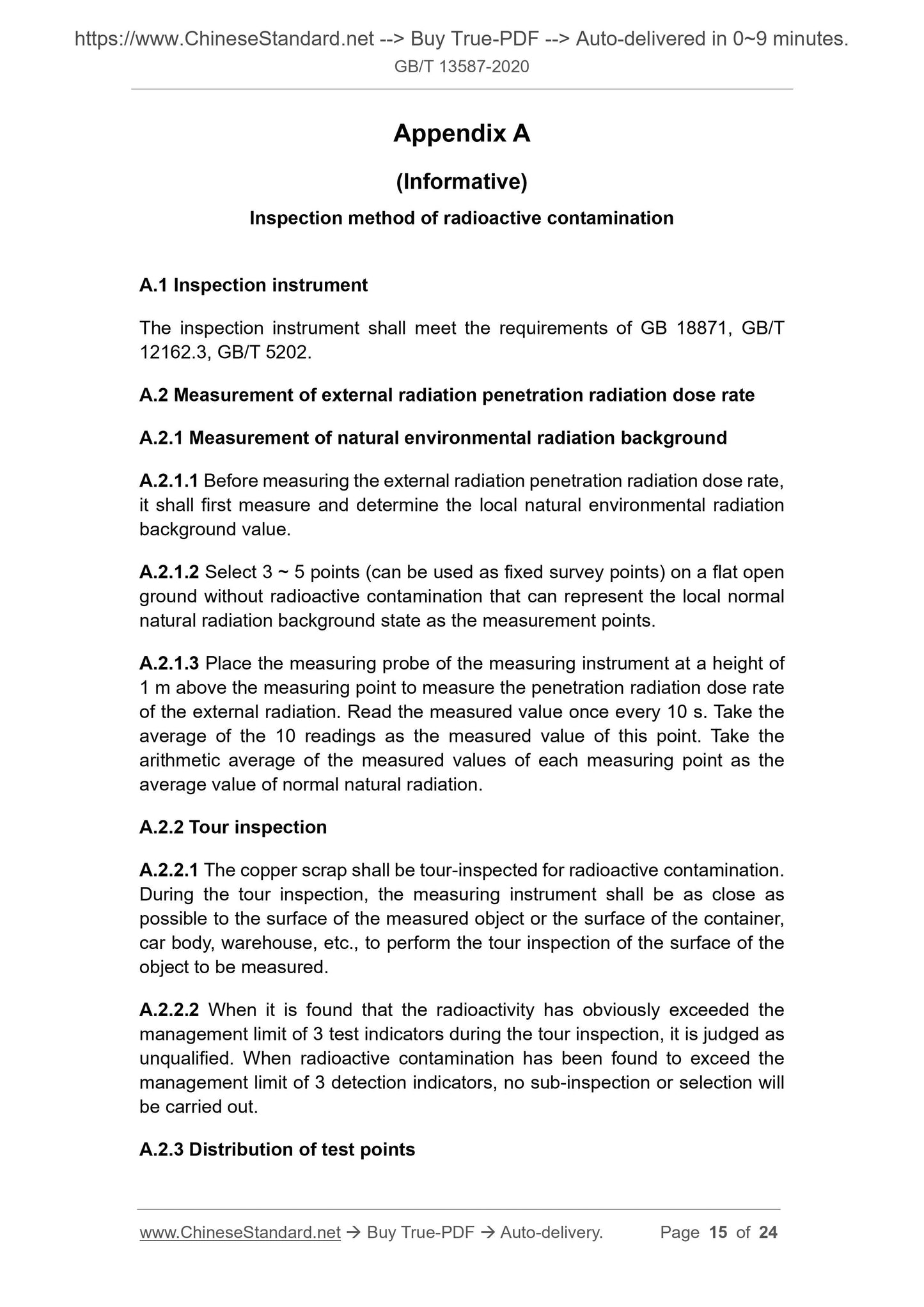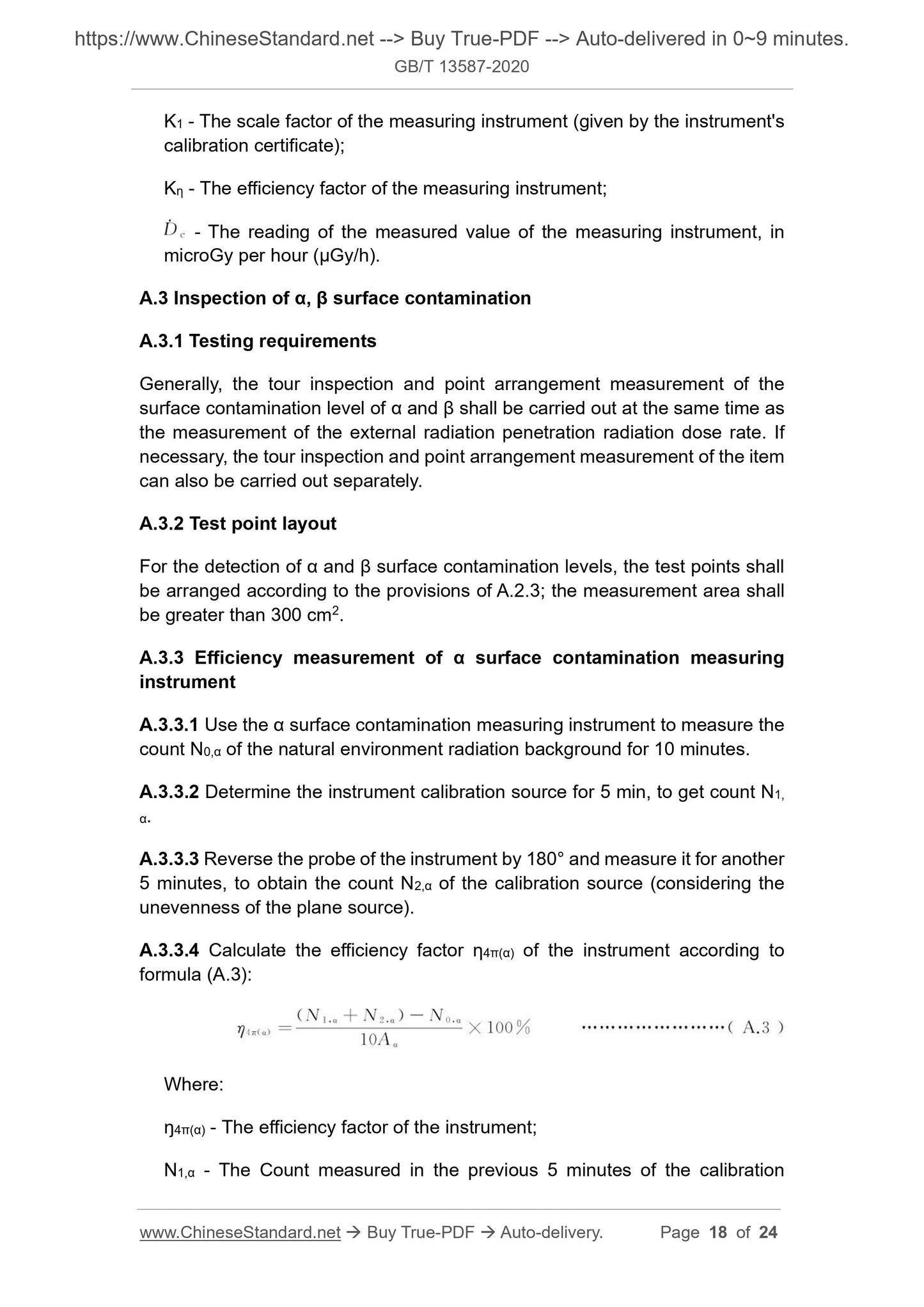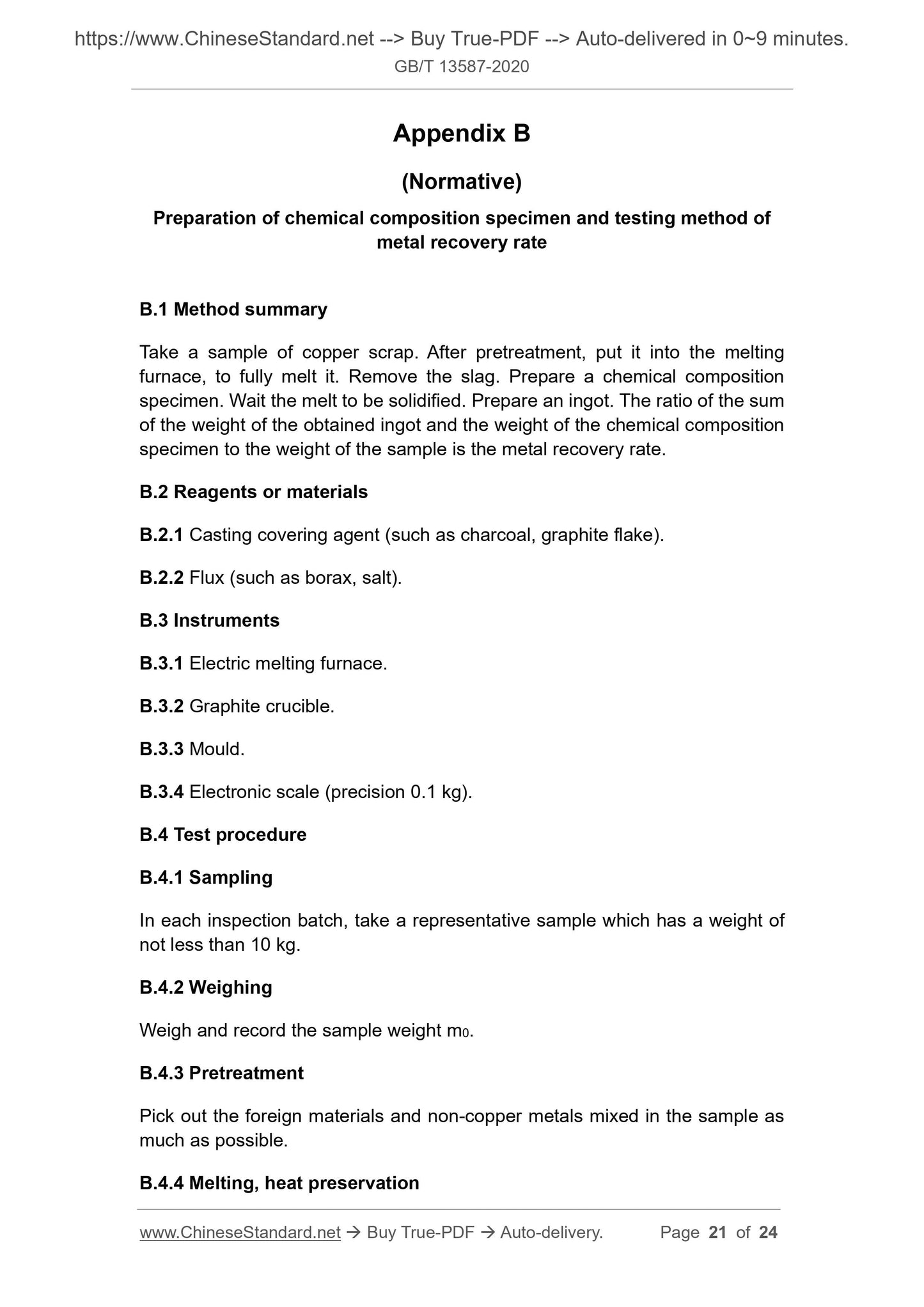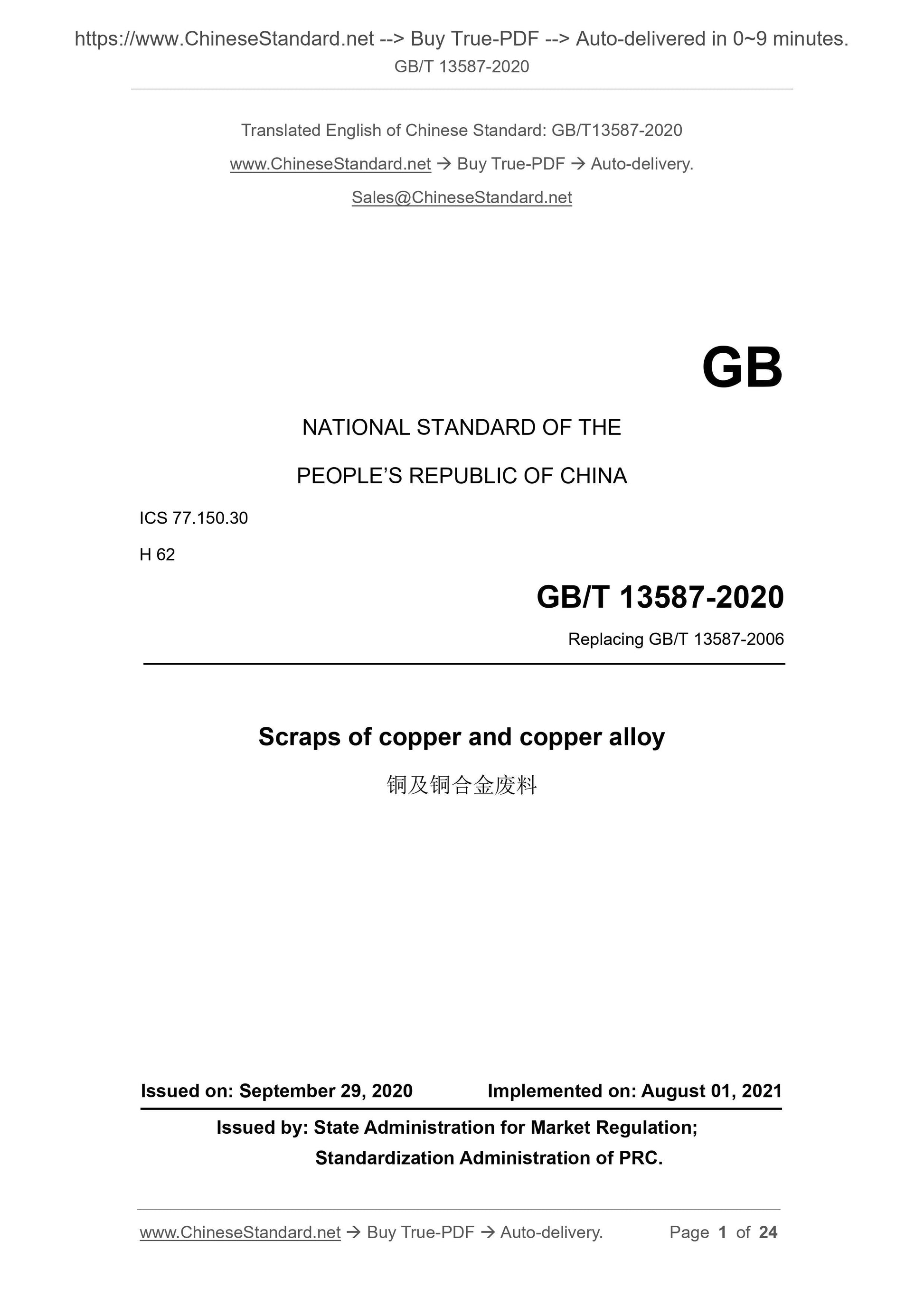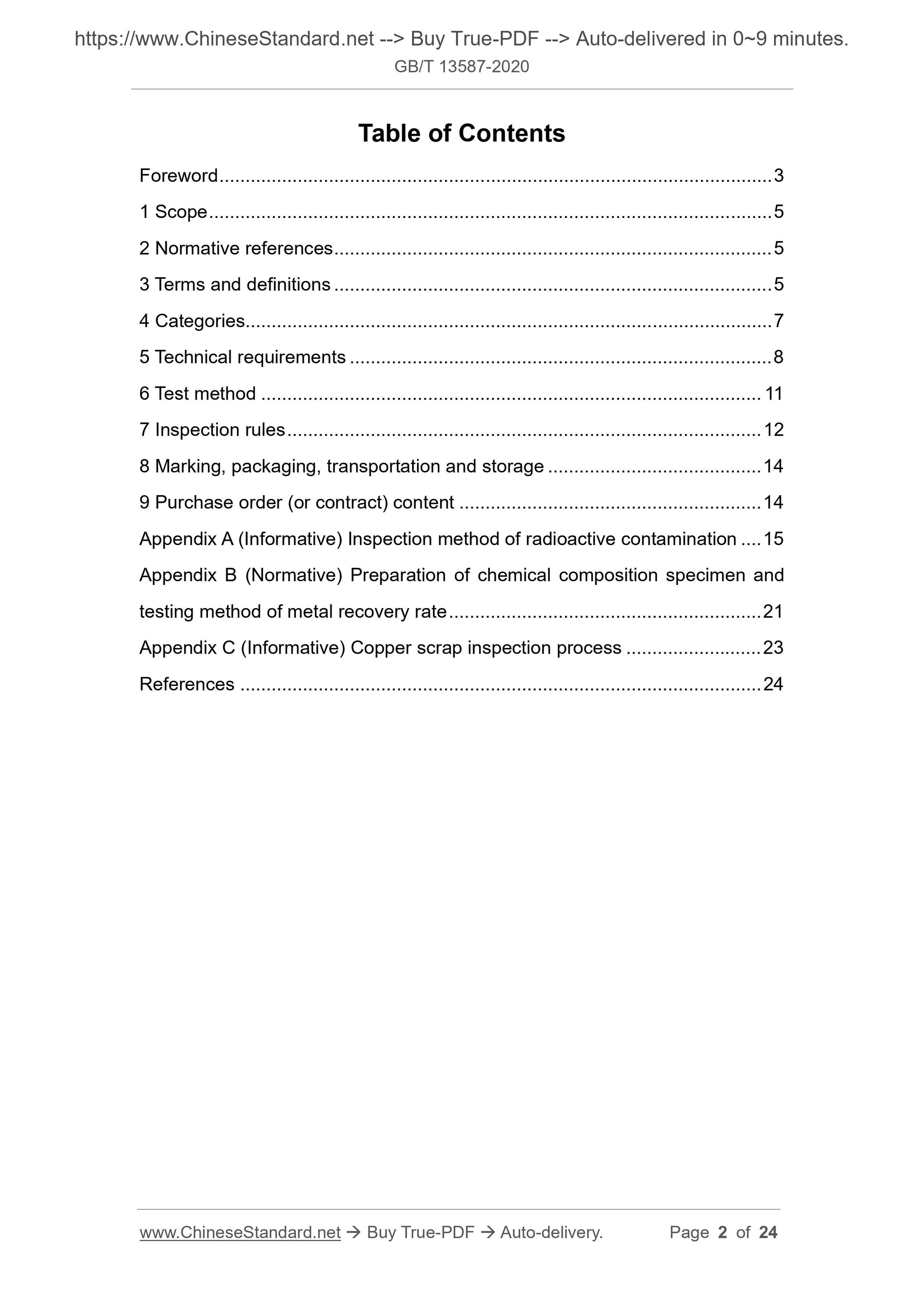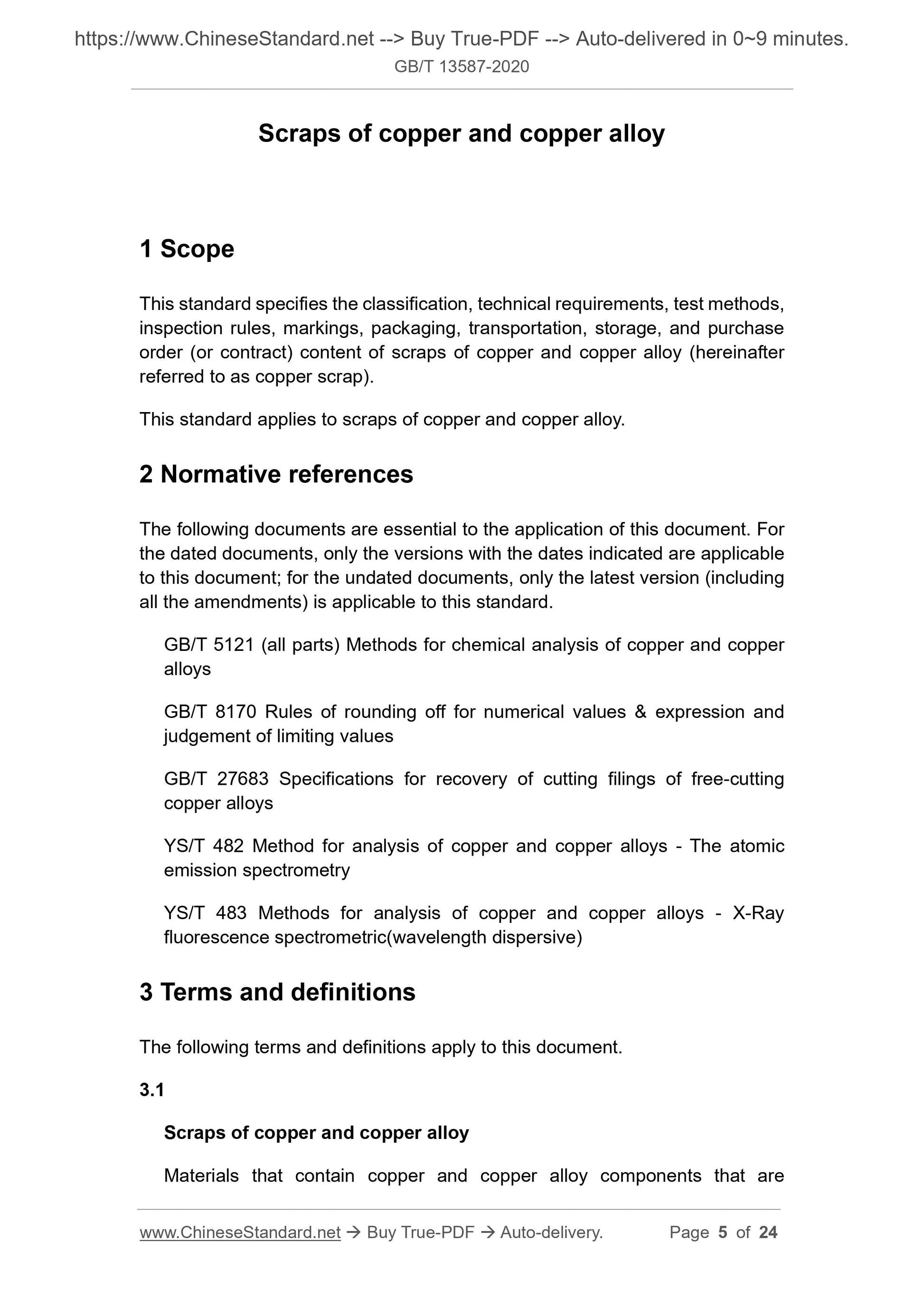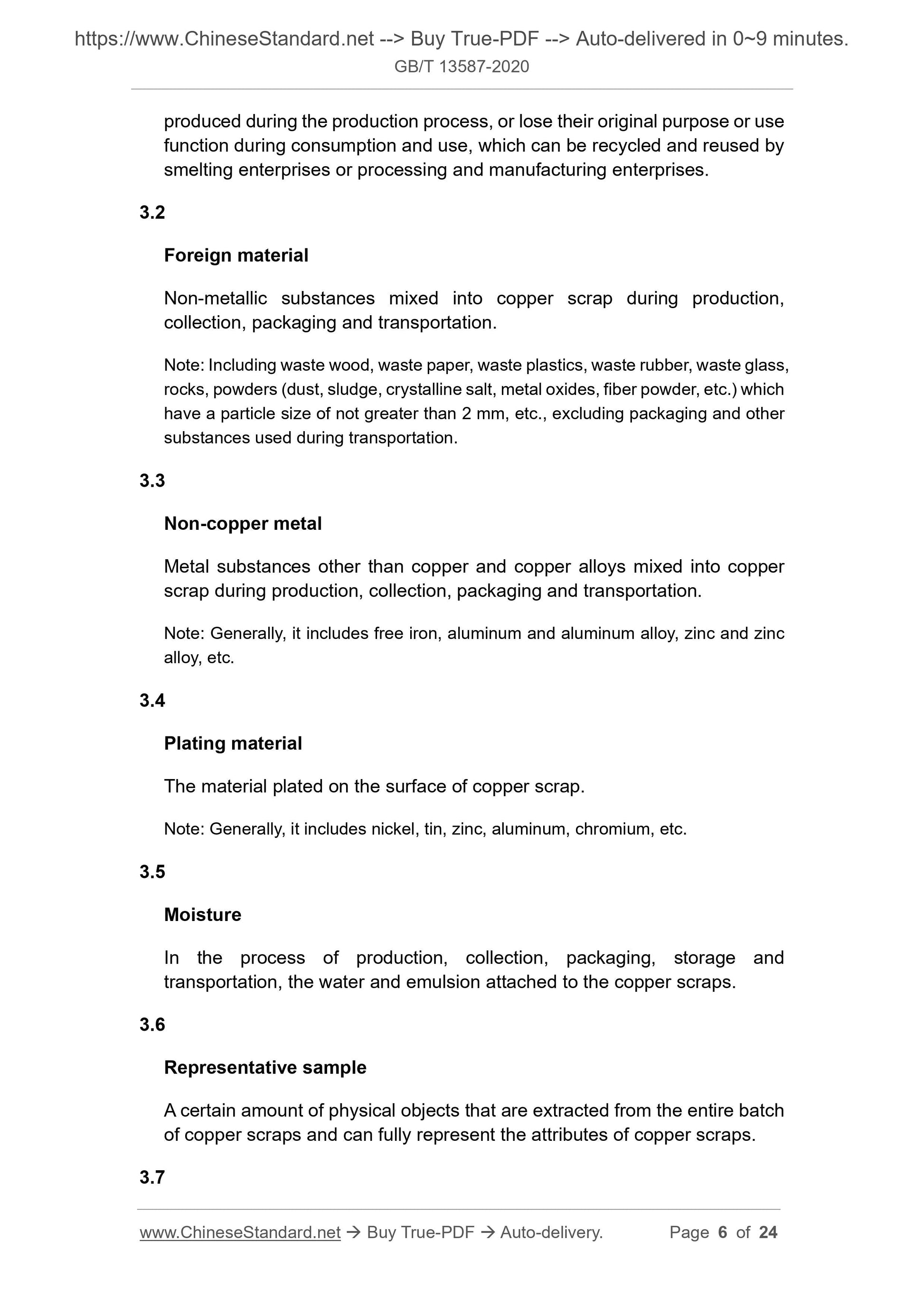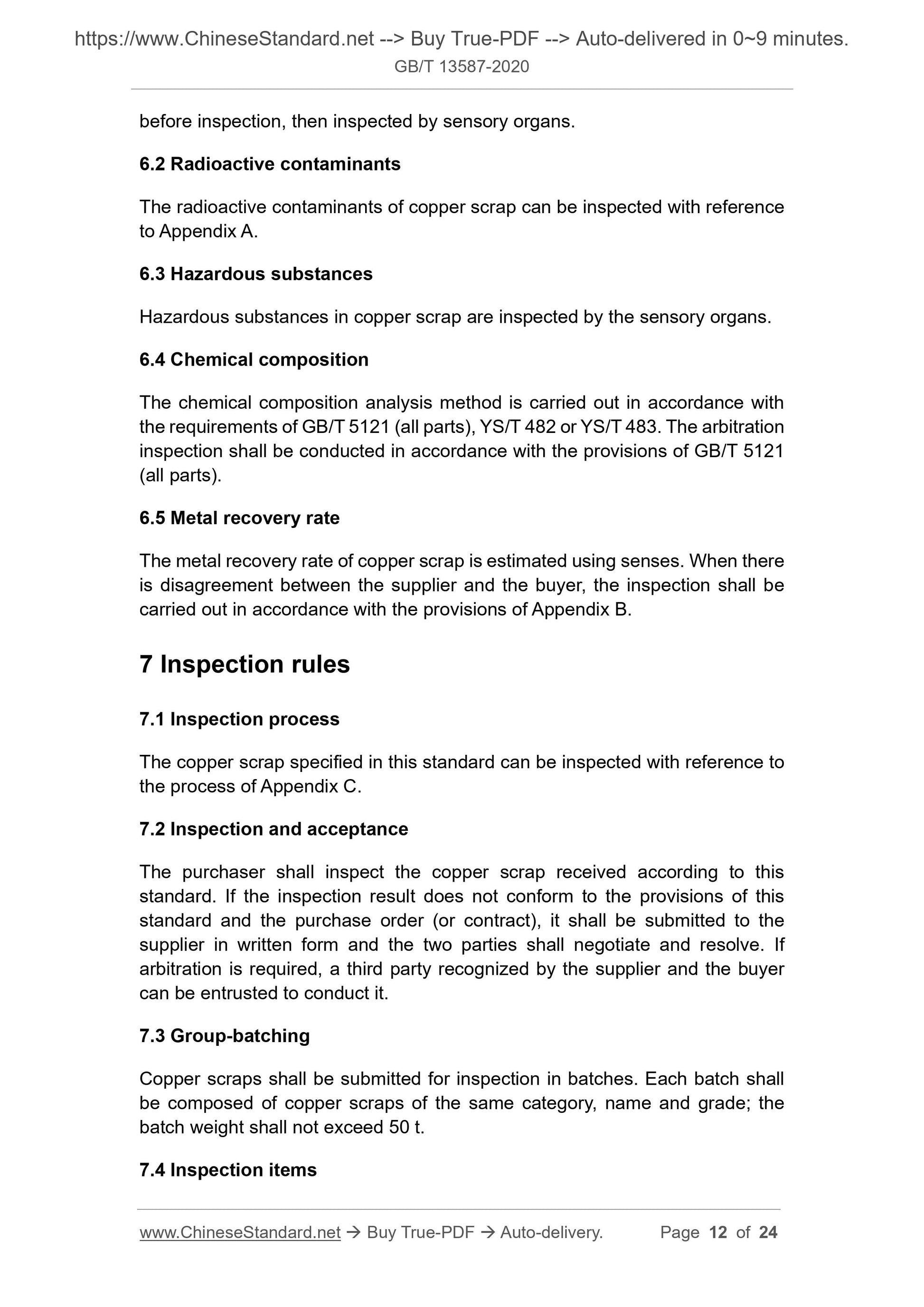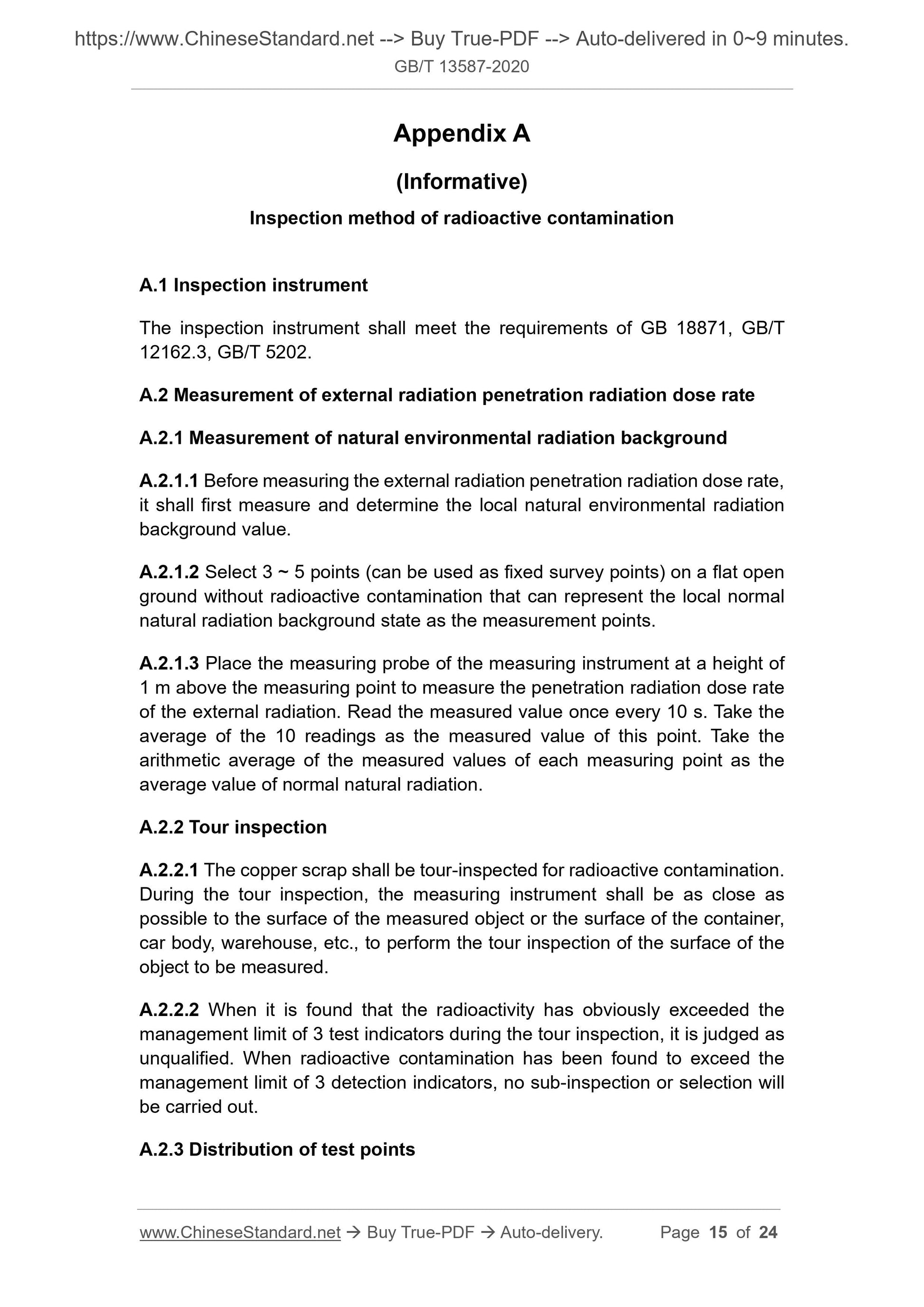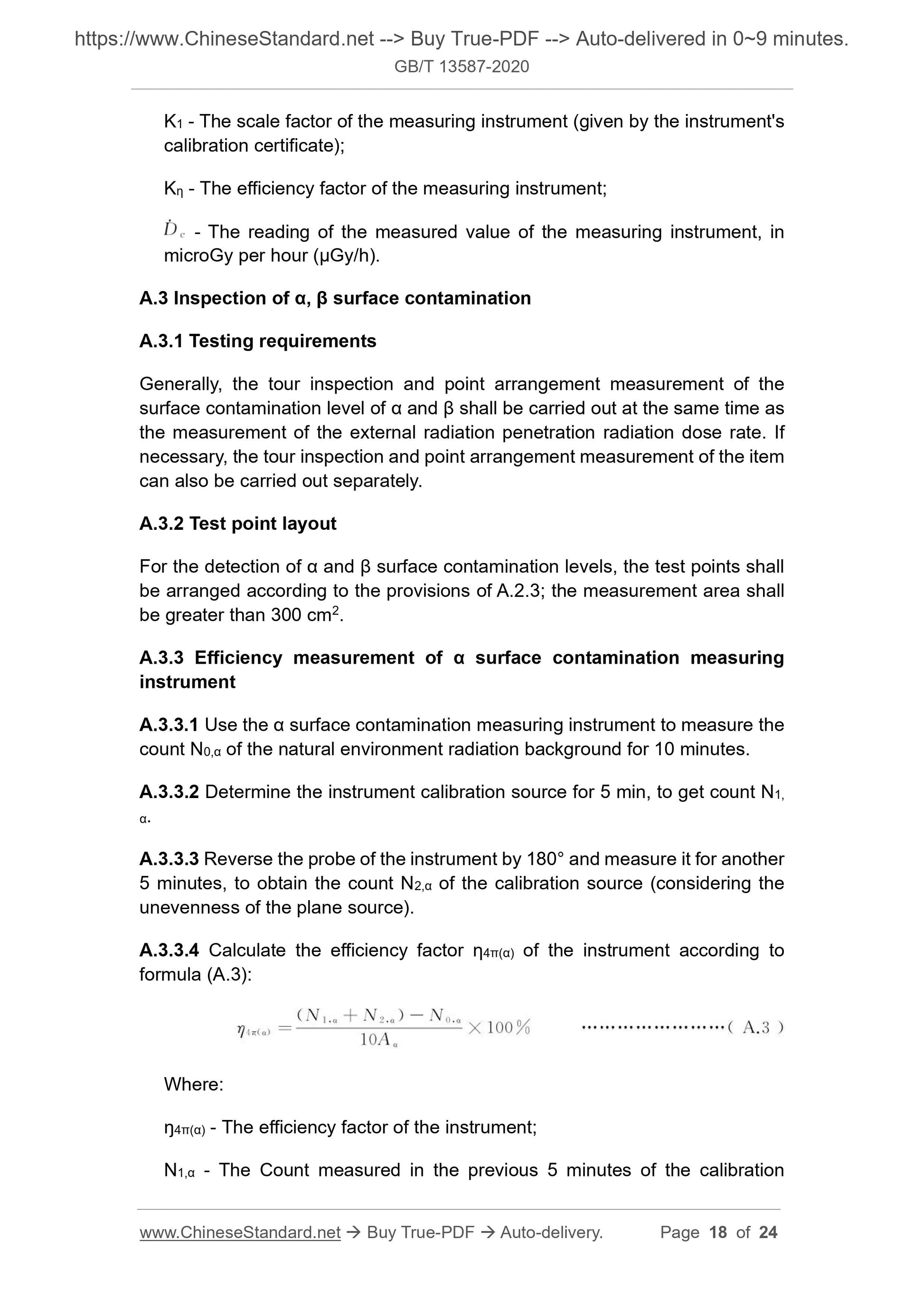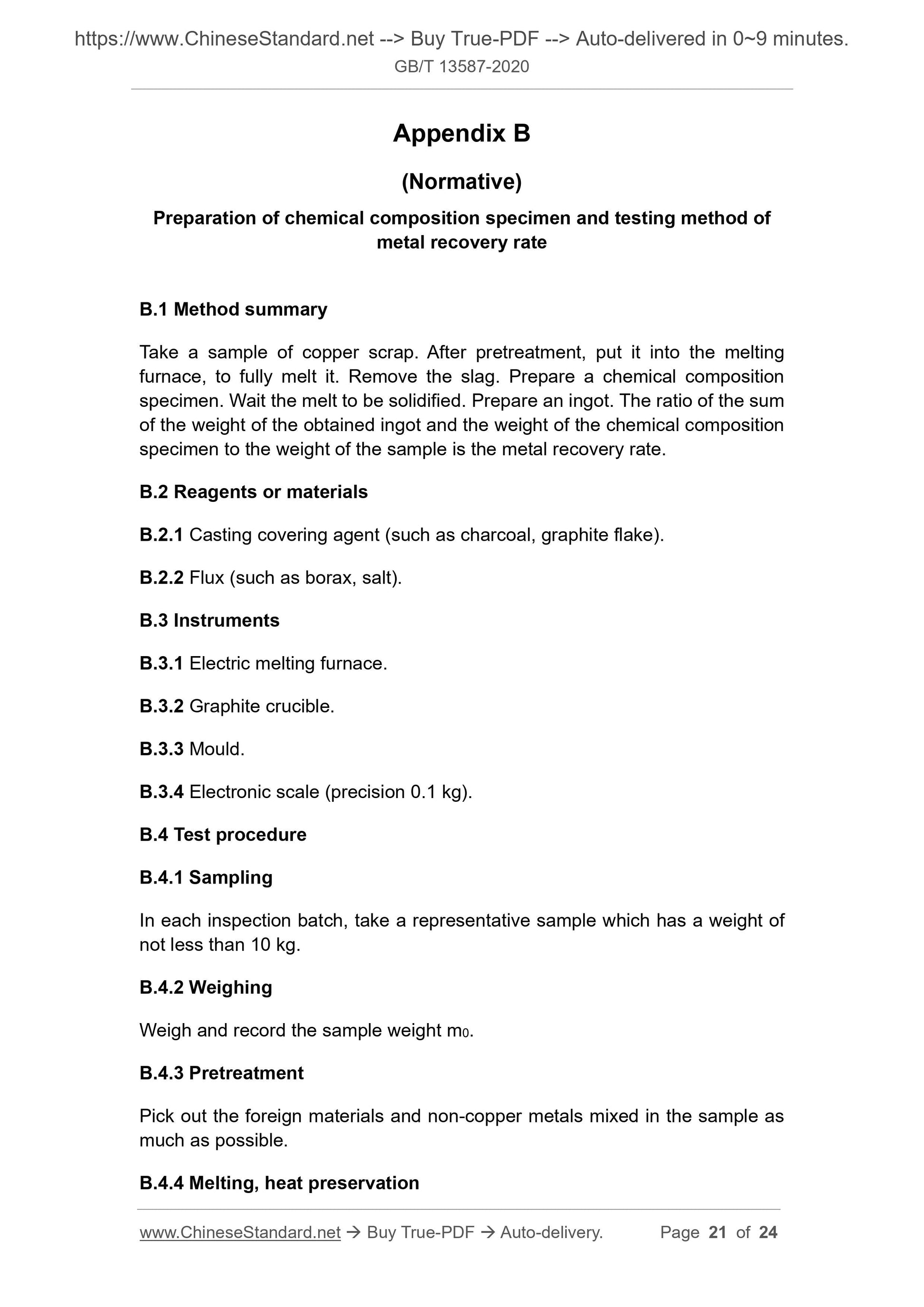1
/
of
8
www.ChineseStandard.us -- Field Test Asia Pte. Ltd.
GB/T 13587-2020 English PDF (GB/T13587-2020)
GB/T 13587-2020 English PDF (GB/T13587-2020)
Regular price
$245.00
Regular price
Sale price
$245.00
Unit price
/
per
Shipping calculated at checkout.
Couldn't load pickup availability
GB/T 13587-2020: Scraps of copper and copper alloy
Delivery: 9 seconds. Download (and Email) true-PDF + Invoice.Get Quotation: Click GB/T 13587-2020 (Self-service in 1-minute)
Newer / historical versions: GB/T 13587-2020
Preview True-PDF
Scope
This standard specifies the classification, technical requirements, test methods,inspection rules, markings, packaging, transportation, storage, and purchase
order (or contract) content of scraps of copper and copper alloy (hereinafter
referred to as copper scrap).
This standard applies to scraps of copper and copper alloy.
Basic Data
| Standard ID | GB/T 13587-2020 (GB/T13587-2020) |
| Description (Translated English) | Scraps of copper and copper alloy |
| Sector / Industry | National Standard (Recommended) |
| Classification of Chinese Standard | H62 |
| Classification of International Standard | 77.150.30 |
| Word Count Estimation | 18,143 |
| Date of Issue | 2020-09-29 |
| Date of Implementation | 2021-08-01 |
| Older Standard (superseded by this standard) | GB/T 13587-2006 |
| Regulation (derived from) | National Standard Announcement No. 20 of 2020 |
| Issuing agency(ies) | State Administration for Market Regulation, China National Standardization Administration |
Share
